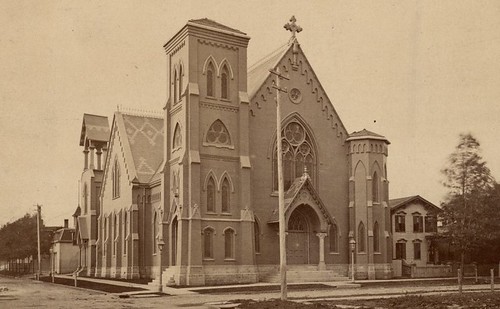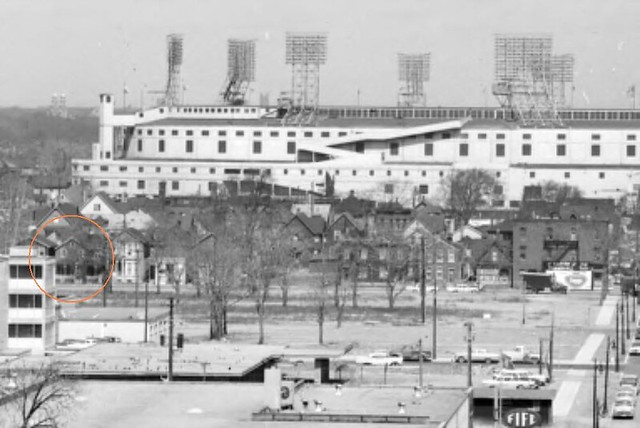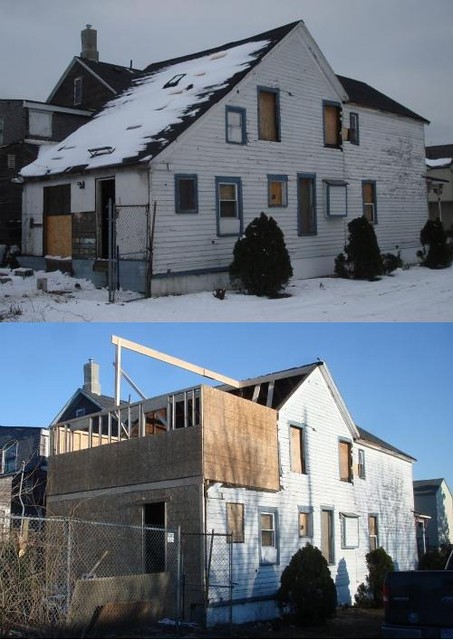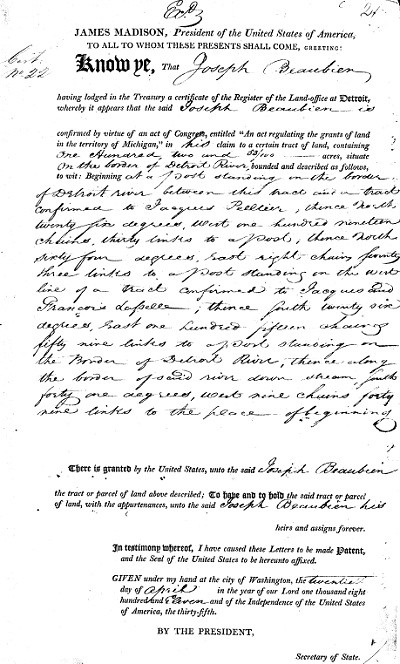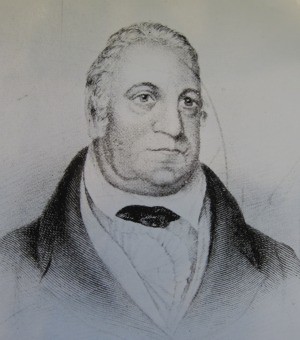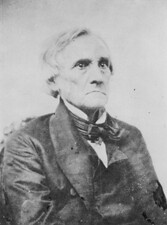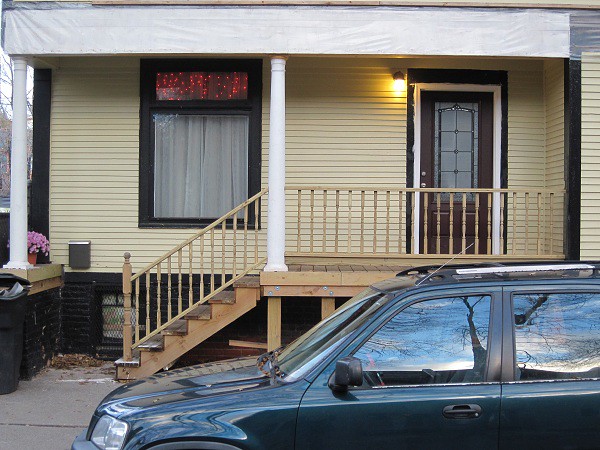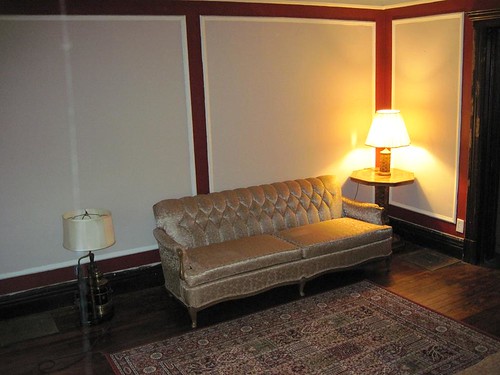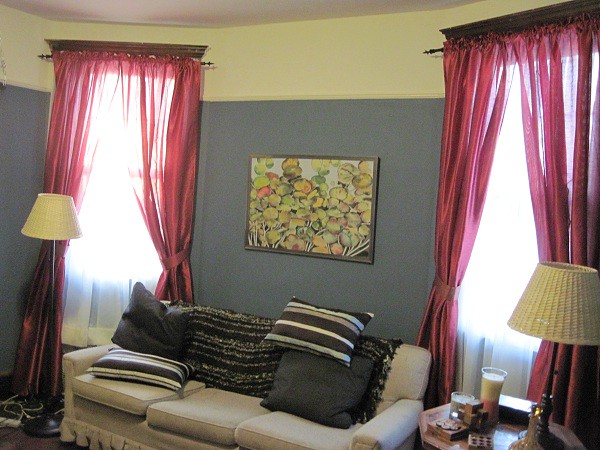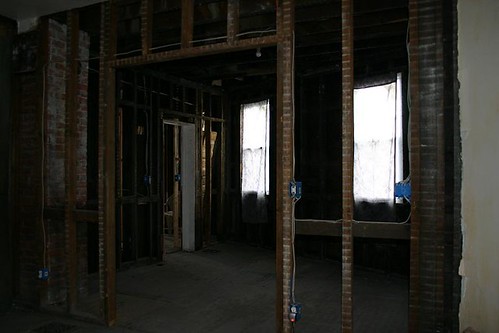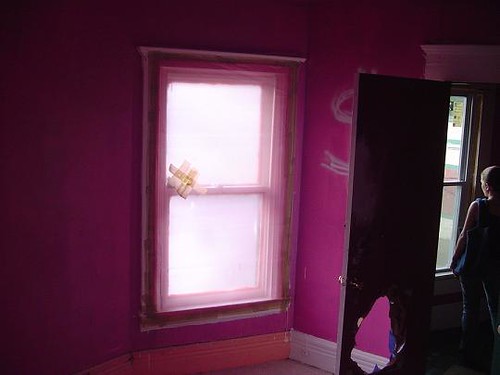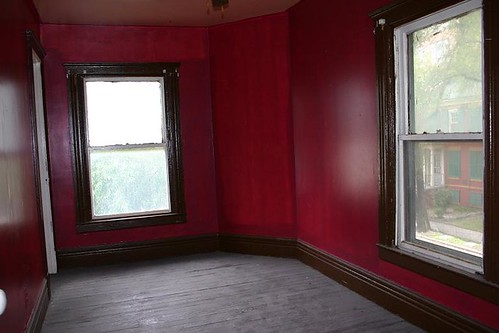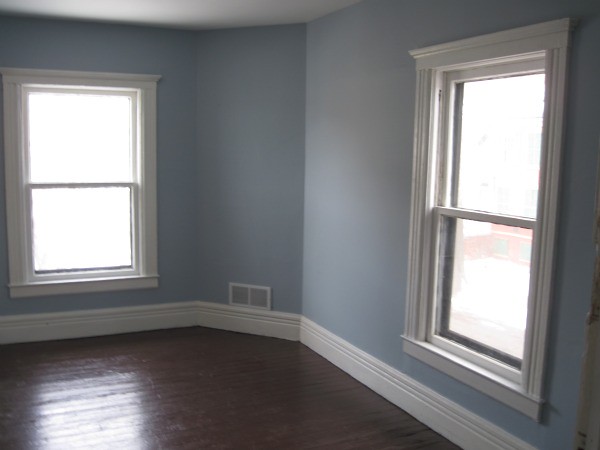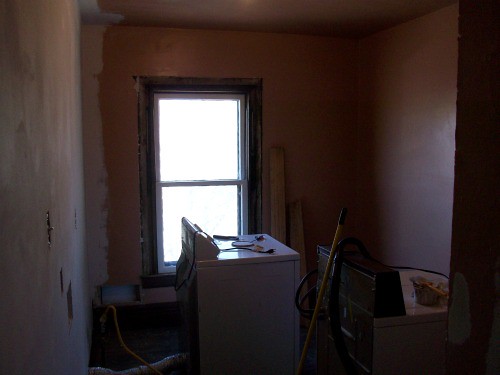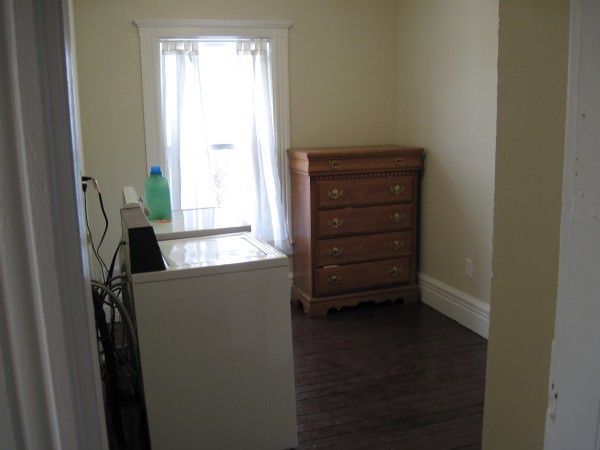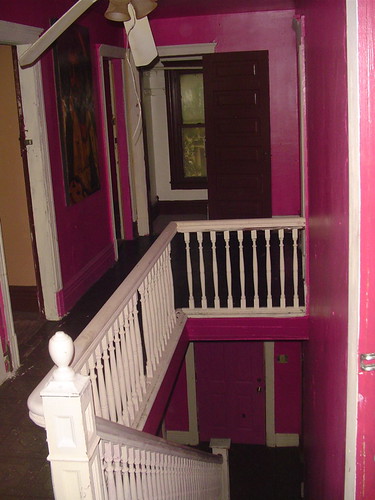I'd like to express my gratitude to Mary Lou Duncan of the Detroit Society for Genealogical Research, who provided me with valuable additional information about Joseph Kingston, including the name of the village where he was born, the exact church in which he was married, and the not-so-subtle fact that he had two different wives that I had negligently believed to be the same person!
* * * * *
Joseph Kingston was born November 12, 1817 in Crohane, County Cork, Ireland. He came to Corktown around the early 1850s, where his brothers Thomas and Samuel had already settled. Joseph Kingston was a drayman (one who drove a flatbed cart, called a
dray, used to transport large items).
Joseph married Eliza Ann Rose in Detroit on October 14, 1852. The marriage record lists the officiant as "M. Hickey" (Manasseh Hickey), pastor of Lafayette Street Methodist Episcopal Church at the time, but the couple were in fact married at
Mariners' Protestant Episcopal Church. The marriage produced two daughters: Nancy Eliza Kingston, baptized on May 7, 1854; and Fanny Catherine Kingston, born in April 23, 1855 and baptized July 8. Fanny died just six days after her baptism and was interred at Elmwood Cemetery July 17, 1855. Both girls were baptized at Mariners' Church.

Mariners' Protestant Episcopal Church as it appeared in the 1880s.
It still stands today, albeit 880 feet east of its original location.
Photo courtesy of the Burton Historical Collection, Detroit Public Library (Source)
Eliza Ann Kingston died some time in 1855. The couple's young daughter, Nancy, was sent to live with Eliza's parents Frederick and Nancy Rose in Bertie Township, Ontario. On June 10, 1856, Joseph Kingston married Ann McCulah, an Irish immigrant.
Joseph Kingston's name first appears in the city directories in 1853. In 1857 he is listed at 104 Baker, the location of the house that stands today. It is impossible to know who built the house and exactly when, since building permits were not required until 1880. For Kingston to be listed at 104 Baker in 1857 presents a bit of a mystery. William Woodbridge, the owner of the farm where the lot was situated, did not submit a plat plan to Wayne County until 1858, and Kingston did not actually own the land until 1861. Kingston's situation is not unique--Kingston's neighbor Thomas Sanford is also listed at an address on the Woodbridge Farm in 1857 (96 Baker), and he did not own that lot until January 1, 1861. Perhaps Woodbridge built rental houses on Baker Street, which he allowed his tenants to buy years later. A less likely scenario is that Woodbridge sold lots on land contracts before he was legally permitted to divide his property. However it happened, we know that the deed transferring ownership of Lot 9 of Block 77 of the Woodbridge Farm from William Woodbridge to Joseph Kingston is dated August 3, 1861.

Detail from the 1860 Census listing the residents of the Kingston household.
In 1869, some of the addresses in Kingston's neighborhood had to be adjusted to higher designations, presumably because poor planning resulted in more structures than there were available numbers. Kingston's address changed from 104 to 132 Baker.
The historical
Detroit Free Press digital archives have been especially helpful in uncovering a few details about Joseph Kingston's life. He was mentioned in the following editions:
- June 1, 1865 - A notice regarding city taxes indicated that $1.00 was collected from Kingston.
- December 14, 1866 - He purchased the lot on the northwest corner of Trumbull and Abbott Streets from William Leverette Woodbridge--the son of the Woodbridge Farm's previous owner--for $800.
- November 1, 1867 - He appeared in Recorder's Court on a charge of "abusive language", but was discharged (i.e., technically guilty but not fined or punished).
- January 14, 1885 - $24.00 was paid to Kingston for jury duty in Recorder's Court.
- February 18, 1890 - Reports from Wayne County Circuit Court include: "John Nagle vs. Joseph Kingston; jury trial concluded; plantiff submits to a non-suit."

Detail from the 1870 Census listing the residents of 132 Baker.
The two young girls shown living with Mr. and Mrs. Kingston in the 1870 census were daughters of Joseph's brother Thomas. The following events may have forced Thomas to send his daughters to a home safer than his own. The
Detroit Free Press reported on July 11, 1864 that Thomas Kingston's wife was accidentally shot inside her home by their nineteen-year-old son, Henry, "who was tampering with a loaded revolver in the house." She died from her wound the following day. Just seven months later, George Kingston (another son of Thomas) shot and killed his brother Samuel on February 28, 1865. The boys were respectively seventeen and fourteen years old at the time of the incident. George apparently held a loaded revolver to his brother's temple to scare him when the firearm discharged. "His brains were scattered about the room," reported the
Free Press in a story published March 2, 1865. "Here is another solemn warning to parents not to permit young boys to carry fire-arms."
The older of the two girls mentioned above was Sarah Ann Kingston, born October 25, 1860. She married Henry Hill Markley, a boilermaker employed by Buhl Steel, on February 10, 1880. Just three months later, Sarah would fall victim to gun violence at the hands of her newlywed husband.

On the evening of May 21, 1880, Markley was furious that his wife had spent most of the evening at her sister's house despite being asked to come home. He threatened to shoot her in the heart, but her clenched fist slowed the bullet enough to spare her life (
Detroit Free Press, 23 May 1880, p. 6). The couple did not divorce, but in fact went on to have ten children, four of whom reached adulthood. Sarah Ann Kingston Markley passed away in Detroit on May 3, 1943 at the age of 82.

Sarah Ann Kingston Markley's headstone in Woodmere Cemetery.
Thanks as always to Gail Hershenzon for helping me locate markers in Woodmere.
The other daughter of Thomas Kingston who lived in the Joseph Kingston House was Sophronia Elizabeth Kingston, born January 21, 1863. She marred James Duncan Jones on December 23, 1879 at St. Peter's Episcopal Church in Corktown. Mr. Jones was a railroad engineer born in Greenock, Scotland. In the early 1890s, the family moved to the depot town of Terrell, Texas. Sophronia Elizabeth Kingston Jones lived there until her death at age 68, on August 1, 1931.

Detail from the 1880 Census listing the occupants of 132 Baker.
The 1884
Sanborn map of Baker Street between Trumbull and Tenth Streets provides valuable information about the Kingston House at the time. It indicates that the front half of the house was two stories high, but that the rear additions were only one story. The house did not yet have a wraparound porch. The large "X" through the structure in the back denotes that it was a stable.

The vicinity of 132 Baker in 1884. Click here to see a recent aerial image of the same area.
At some point before the 1897 Sanborn maps were drawn, some changes were made to 132 Baker:

Was 1/3 of the house gone? Or was one of the maps poorly executed? The Burton Historical Collection keeps an index of building permits from 1880 to 1908, and no permit for an addition or repairs (such as after a fire) have been found.
According to Mary Lou Duncan, Ann Kingston filed for divorce on December 2, 1885, and filed a petition for alimony October 15 of the following year. The husband and wife were already in their seventies by this point. An article about the case appeared in the
Detroit Free Press on October 31, 1886.

The divorce suit of Ann against Joseph Kingston in the Wayne Circuit Court was ended at noon Saturday and submitted to Judge Jennison, who reserved his decision until Monday. While the aged defendant was on the stand he was asked to relate a certain attempt on the complainant's life, which she charges him with having made.
"Began," said he, "we were settin' at the dinner table with the stove poipe betwixt us. We always were so sittewated, because there'd be an anoimated scrimmage betwixt us if we hadn't the sthove or something of loike carrackthur a separatin' of us. The ould wooman schoved me over a cup o tea, an' I says to her, says I, 'What the divil kind o' tea d'ye call this?'
"'What's the matthur wid the tea?' said she.
"'It's schlop,' says I.
"'I'll schlop ye,' says she, an' 'round the sthove did she come at me an' basted me over the head with a pitcher. The pitcher was broke into smithereens and the divil that she is picked up a sthove poker and kim for me wid blood in her eye. I thin grasped the table knife in me right hand and looked at her. She looked at me for a moment and drapped the poker and I drapped the knife. She said that I was worse than a heathen and I said she was worse than the divil, and we had it backwards and forwards. When the hoshtilities had abated she said her short prayers and wished me dead in the next ten minutes, but I didn't doie, bejabbers."
The Judge appeared to be very much impressed by the very entertaining testimony of the 70-years old man, and a number of times had to hold his mouth to keep from laughing at the antics of the old gentleman.
At the conclusion of the case the Judge said it did not appear to him that the complainant had been treated worse by the defendant than the defendant had by her. Without deciding the cae he said that as family quarrels between the aged couple had not terminated fatally in the long period which they have lived together he thought there was no particular danger in the future.
"They eat at the same table while this case is pending," said the Judge, "with nothing but a stovepipe between them, and I guess they will not hurt each other."
Mr. Pound, attorney for the complainant, briefly reviewed the case. He did not strongly urge the Judge for a separation, but insisted on the right of his client to receive more money for the purpose of buying her clothing.
Lawyer Craig said that the defendant had given his wife all the clothes she needs and decree for very heavy alimony would drive both parties to the poorhouse.
Judge Jennison said that he required some time to consider the facts and reserved his decision until Monday.
Despite her prayers, Ann McCulah Kingston passed away before her husband, on August 3, 1890. Several weeks later, on October 27, Joseph Kingston signed over his house to his daughter, Nancy Eliza Kingston, on the condition that he would "have a lease of said lot during the term of his natural life". The document was notarized by real estate investor and philanthropist
William H. Maybury (not to be confused with former Mayor
William C. Maybury).

The October 27, 1890 deed conveying the property
from Joseph Kingston to his daughter Nancy.
The city directories indicate that Nancy Eliza Kingston was living with her father as early as 1896. Her occupation was listed as "housekeeper". Joseph Kingston did indeed live out the rest of his life in the house, where he died on November 13, 1899.


Joseph Kingston's death certificate. (Seeking Michigan)
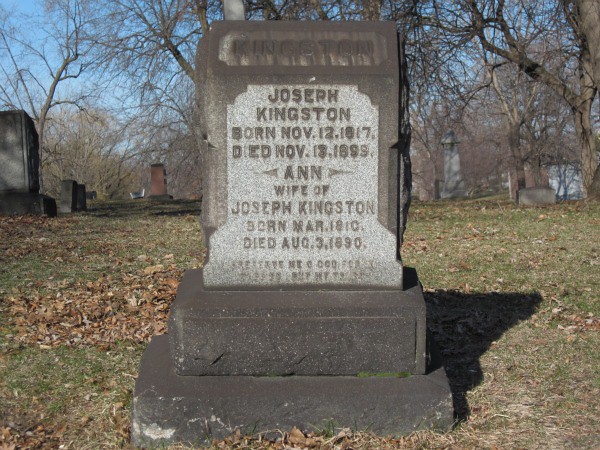
Joseph and Ann Kingston's marker in Woodmere Cemetery. Although it gives Mrs. Kingston's birth year as 1810, other records indicate it was more likely 1820.
Next Week: The Kingston House Part III: 1900-Present




